⏰ GENTRIFICATION ALERT - 7 Months Until Displacement: The Looming Deadline for Tucson's Historic Barrios
State-mandated gentrification gives developers free rein over barrios that have survived for generations
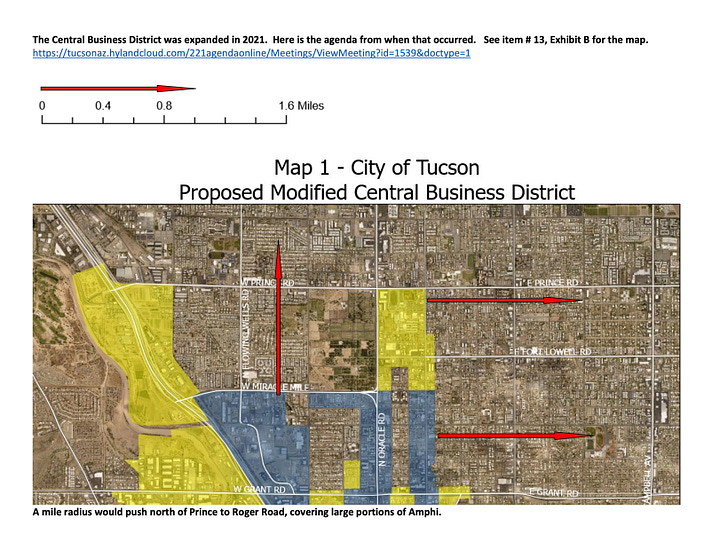
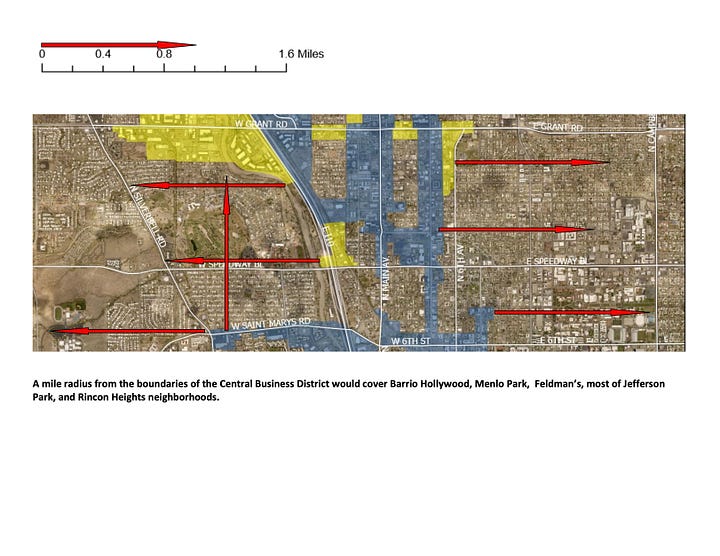
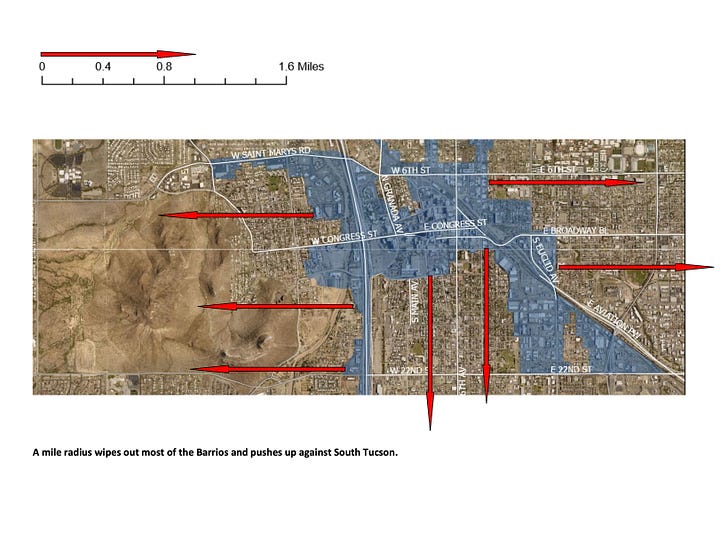
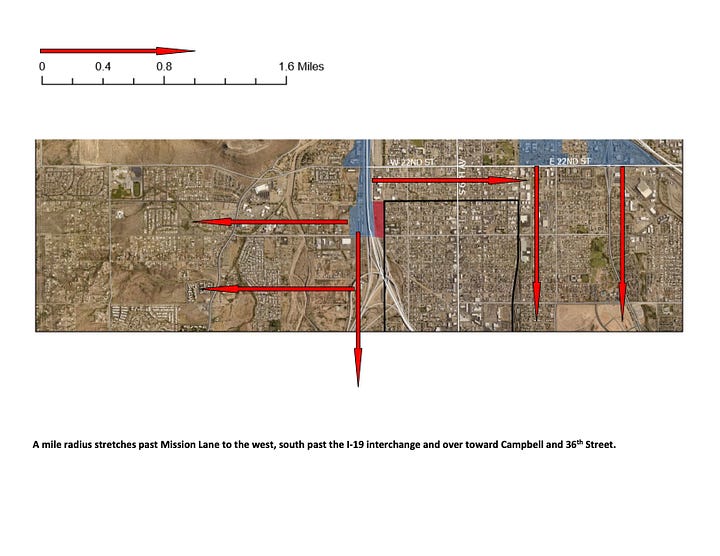
😽 Keepin’ It Simple Summary for Younger Readers
👧🏾✊🏾👦🏾
🏜️ The Arizona government 🏛️ made a new rule 📜 that will change how houses 🏠 can be built in Tucson's oldest neighborhoods 🏘️. Right now, most areas only allow one house per lot 🚧, but this new rule will let builders put up to four homes on one lot 🏘️🏘️🏘️🏘️ in neighborhoods close to downtown 🌆.
This might sound good because we need more houses 🏡, but there's a problem 🚨: without rules to keep homes affordable 💸, this could make these neighborhoods too expensive for the families who have lived there for generations 👵👴👨👩👧👦. The city has until January to figure out how to handle this change 🗓️, and people are meeting this week to speak up about it 🗣️🤝.
🗝️ Takeaways
🚨 Arizona's Republican legislature passed HB 2721, forcing Tucson to allow duplexes, triplexes, and fourplexes within a one-mile radius of downtown by January 1, 2026.
🏠 The law has zero protections against corporate investors buying up properties and developing market-rate housing that will displace current residents.
🗺️ Affected areas include the '05 (85705), Barrio Hollywood, Menlo Park, multiple historic barrios, and other predominantly Latino and working-class neighborhoods.
💰 Research shows that without strong anti-displacement policies, new development leads to gentrification and loss of affordable housing.
📣 The first public meeting on implementing the law is THIS THURSDAY (May 22) at 5:30 p.m., with two virtual meetings the following week.
✊ Communities can fight back by demanding tenant protections, affordability requirements, limits on corporate investors, and real decision-making power.
The Gentrification Blueprint: How Arizona's New "Middle Housing" Law Threatens to Erase Tucson's Barrios
It's the same story, different decade.
The forces of "progress" and "development" are once again taking aim at Tucson's historic barrios and working-class neighborhoods. This time, the weapon isn't the federal bulldozers of 1960s urban renewal—it's the pens of Arizona legislators who've crafted a law that could permanently alter our city's cultural landscape.
As I walk the streets of Barrio Hollywood, where family and friends have lived for generations, I can't help but wonder how many more years these communities have left. The vultures are circling, and this time they come bearing the friendly-sounding term "middle housing."
The Countdown to Displacement Begins
Mark your calendars, gente. January 1, 2026.
That's the deadline our city faces to implement House Bill 2721—a Republican-backed law that forces Tucson to allow duplexes, triplexes, and fourplexes in historically single-family neighborhoods within one mile (see maps above) of our downtown Central Business District (CBD).
Qué conveniente, no? After decades of disinvestment in our barrios, suddenly there's intense interest in "revitalizing" these areas. But we know what "revitalization" typically means for our communities: displacement.
If city officials fail to implement new zoning by the deadline, the consequences will be even worse: these developer-friendly provisions will automatically apply citywide.
So we're not just fighting for the neighborhoods within that one-mile radius—we're fighting for all of Tucson.
Map of Destruction: Which Neighborhoods Are in the Crosshairs?
Let's get specific about which communities are at risk. The Central Business District was conveniently expanded in 2021, meaning the one-mile radius now reaches further than ever into our neighborhoods.
Based on the maps provided in the city documentation (see above), the affected areas include:
The '05 (85705): One of Tucson's poorest zip codes, already targeted by the "Thrive in the '05" initiative that has raised concerns about gentrification
Barrio Hollywood: A historically Mexican-American neighborhood west of downtown
Menlo Park: One of Tucson's oldest neighborhoods with deep Indigenous and Mexican roots
Multiple historic barrios south of downtown: Including parts of Barrio Santa Rosa and Barrio Santa Rita
Feldman's Neighborhood: Just north of the University of Arizona
Jefferson Park: A diverse neighborhood with affordable housing options
Rincon Heights: East of the university
Large portions of Amphi: Extending north of Prince to Roger Road
Mirá nomás—nearly all of these areas are home to predominantly working-class, Latino, and Indigenous communities. This is not a coincidence.
Unpacking the Law: What HB 2721 Does and Doesn't Do
E. IF A MUNICIPALITY DOES NOT ADOPT THE REGULATIONS REQUIRED BY THIS SECTION ON OR BEFORE JANUARY 1, 2026, MIDDLE HOUSING SHALL BE ALLOWED ON ALL LOTS IN THE MUNICIPALITY ZONED FOR SINGLE-FAMILY RESIDENTIAL USE WITHOUT ANY LIMITATIONS.
Let's break down what this law actually requires:
Cities with populations over 75,000 (including Tucson) must allow duplexes, triplexes, and fourplexes on R-1 (single-family) zoned lots within one mile of the Central Business District
Building height is limited to two stories
Compliance is required by January 1, 2026, or the requirements expand citywide
There are ongoing debates about whether historic districts will be exempt, but as of now, the law doesn't require multifamily developments in historic areas to meet special design guidelines
What the law doesn't include is equally important:
No rent control provisions
No requirements for affordable units
No protections against institutional investors buying up multiple properties
No first right of refusal for current residents
No community benefits agreements
No meaningful community input
In other words, this is a developer's dream and a community's nightmare.
A History of Displacement: Why This Time Isn't Different
For those new to Tucson's history, this pattern of displacement might seem novel. It isn't. For generations, our communities have faced waves of destruction in the name of "progress.”
The most notorious example remains the construction of the Tucson Convention Center in the 1960s, which demolished most of Barrio Viejo, displacing over 1,200 predominantly Mexican American residents and destroying centuries of cultural heritage.
According to historian Lydia Otero in her book "La Calle: Spatial Conflicts and Urban Renewal in a Southwest City," city officials justified this destruction by labeling these neighborhoods as "blighted"—despite their rich cultural significance and tight-knit communities.
La historia se repite. The same patterns of power are at work today, just with a different language. Instead of "urban renewal," we hear about "attainable housing." Instead of "blight," we hear about "underutilized land." But the end result remains the same: our communities face displacement.
The '05: Ground Zero for the New Displacement
The area known as "the '05" (from its 85705 zip code) represents a perfect case study in how "revitalization" can threaten long-standing communities. The "Thrive in the '05" initiative, which claims to improve the neighborhood while maintaining affordability, has targeted this area north of downtown.
Housing prices in the '05 have risen dramatically in recent years. According to the Pima County Assessor's Office data published in their 2024 Annual Report, property values in the 85705 zip code have increased at a faster rate than the city average since the "Thrive in the '05" initiative began. This has already put pressure on longtime residents, many of whom are renters.
Now, with HB 2721 allowing more intensive development throughout this area, those pressures will only intensify. Developers will have little incentive to build truly affordable housing when they can maximize profits with market-rate or luxury units.
As local housing advocate Maria Cadaval noted at a community forum held at El Rio Neighborhood Center last month, "They're not building for nosotros—they're building for the people they want to bring in." This observation cuts to the heart of the matter: new development without community protections doesn't serve existing residents.
The Corporate Takeover of Housing
There's another dangerous trend that HB 2721 could accelerate: the growing corporate ownership of housing in Tucson.
According to a 2024 report by the Arizona Housing Coalition titled "The Rising Tide of Institutional Investment in Arizona Housing," corporate and institutional investors have significantly increased their presence in Tucson's housing market over the past decade. While exact percentages vary by neighborhood, the report indicates that corporate ownership is most concentrated in areas that would be affected by this new law.
These corporate landlords typically raise rents more aggressively than individual owners, convert long-term rentals to short-term vacation rentals, and are more likely to evict tenants. With HB 2721, they'll gain even more opportunities to buy properties, demolish existing homes, and replace them with multi-unit developments that maximize profit rather than preserve community.
The Numbers Don't Lie: Development Without Protections Raises Concerns About Displacement
Proponents of upzoning often claim that increasing housing supply will naturally make housing more affordable. But research raises serious questions about this assumption when applied to vulnerable communities.
A study published in the journal Housing Policy Debate in 2020 by Yonah Freemark examined the short-term effects of upzoning in Chicago and found that it led to increased property values but no additional housing construction in the time period studied. This suggests that simply changing zoning without other measures may accelerate speculation rather than immediately increase housing supply.
Meanwhile, a 2019 study from UC Berkeley's Urban Displacement Project found that market-rate development without anti-displacement policies typically has mixed effects in low-income neighborhoods—potentially increasing overall housing supply in a region while still contributing to localized displacement pressures.
Let's be clear: HB 2721 has no anti-displacement policies built in.
What the City Could Do—But Likely Won't
If our city leadership were truly committed to protecting communities while increasing housing density, they would implement robust policies alongside their compliance with HB 2721:
Community Benefits Agreements: Legally binding contracts that require developers to provide specific amenities and economic opportunities to local communities
Inclusionary Zoning: Requirements for a percentage of new housing to be affordable for lower-income residents
Right of First Refusal: Giving tenants the first opportunity to purchase their building if the owner decides to sell
Anti-Flipping Taxes: Higher tax rates on properties sold shortly after purchase to discourage speculation
Displacement Risk Analysis: Requiring studies of potential displacement before approving new developments
Community Land Trusts: Supporting community ownership of land to ensure permanent affordability
But let's be honest—our city leadership has a long history of prioritizing development interests over community needs. Despite their progressive rhetoric, the current city council and mayor have consistently sided with developers when it matters most.
As reported by Arizona Public Media on May 5, 2025, Tucson faces significant hurdles in implementing the state law due to existing development regulations, such as setbacks and lot coverage requirements.
According to this report, "The city is evaluating two main approaches: a more restrictive option that allows up to four units while maintaining most single-family standards, and an alternative that adjusts development standards to make middle housing more feasible."
My prediction? They'll opt for the more permissive approach, making it easier for developers to maximize profits while offering token gestures toward community protection.
Act Now: Your Community Needs You
We have LESS THAN A WEEK until the first public meeting. The Planning and Development Services Department (PDSD) is hosting three public meetings on how the city plans to implement this state mandate:
In-Person Meeting - THIS THURSDAY!
Date: Thursday, May 22, 2025
Time: 5:30 - 7 p.m.
Location: Housing and Community Development's Sentinel Room, 310 N Commerce Park Loop
Virtual Meetings
Wednesday, May 28, 2025, 5:30 - 7 p.m.
Thursday, May 29, 2025, 11:30 a.m. – 1 p.m.
Registration links can be found on the city's website, but for the in-person meeting, you can register here: https://tucsonpdsd.info/MiddleHousingMayRegistration
We need a MASSIVE turnout at these meetings. This Thursday's in-person meeting is our best chance to make our voices heard.
Remember: developers will be the only ones at the table if we don't show up when these decisions are made.
When you attend, demand:
Maximum protections for existing residents, including rent stabilization for nearby properties
Design standards that respect neighborhood character and scale
Requirements for truly affordable units (30% of Area Median Income or below) in new developments
Limits on institutional investors and corporate ownership
Community benefits agreements that guarantee local hiring and support for existing small businesses
Displacement impact studies before approval of any development with three or more units
The formation of neighborhood councils with real power over development decisions
Finding Hope in Resistance
Despite the grim outlook, there are reasons for hope. Across the country, communities facing similar threats have organized and won significant victories:
In Portland, community advocates secured tenant protection measures alongside new zoning changes, as documented by the Anti-Displacement Portland coalition.
In Minneapolis, community groups won several tenant protection ordinances after their city implemented similar upzoning policies.
In Boston's Roxbury neighborhood, residents successfully negotiated community benefits agreements that included affordable housing commitments.
These victories didn't happen by accident—they happened because communities organized, showed up in overwhelming numbers, and refused to accept displacement as inevitable.
Somos más fuertes juntos. Our barrios have survived centuries of attempts to erase them. From Spanish colonization to American annexation, from urban renewal to gentrification, we're still here. With collective action, we'll ensure our communities not only survive but thrive for generations to come.
As my abuela always said, "No nos vamos a dejar." We won't let them push us out.
Stay Informed and Support Independent Journalism
The mainstream media won't tell these stories with the depth and perspective our communities deserve. That's why independent outlets like Three Sonorans Substack are essential.
Your support allows us to continue investigating these issues, amplifying community voices, and holding power accountable. Consider becoming a paid subscriber to the Three Sonorans Substack to help fund this critical work.
Together, we can ensure that Tucson's future story includes everyone, not just those with the deepest pockets.
What do you think?
What do you think about the city's approach to implementing this law? Do you live in one of the affected neighborhoods, and if so, what impacts do you anticipate on your community?
Have a scoop or a story you want us to follow up on? Send us a message!





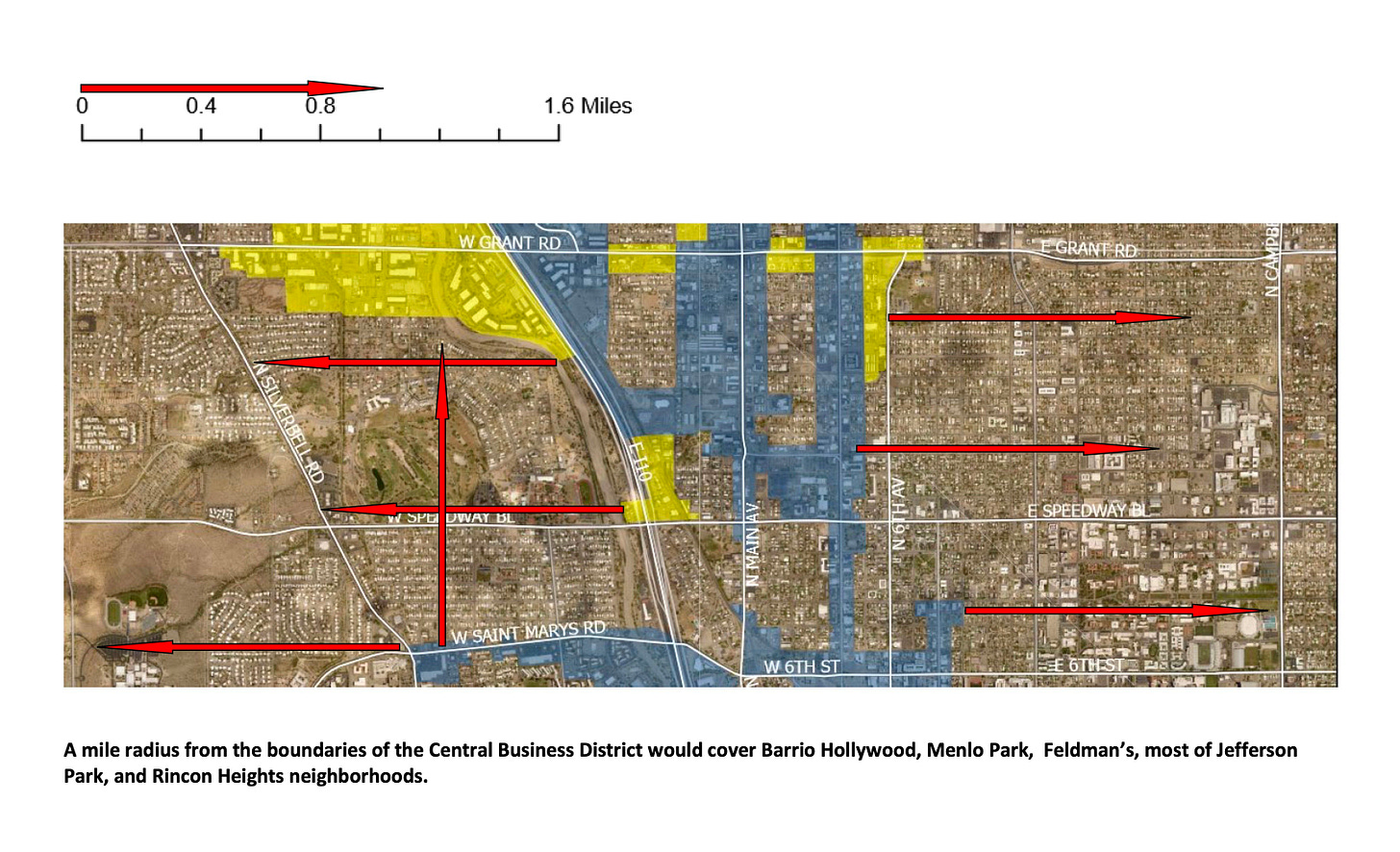
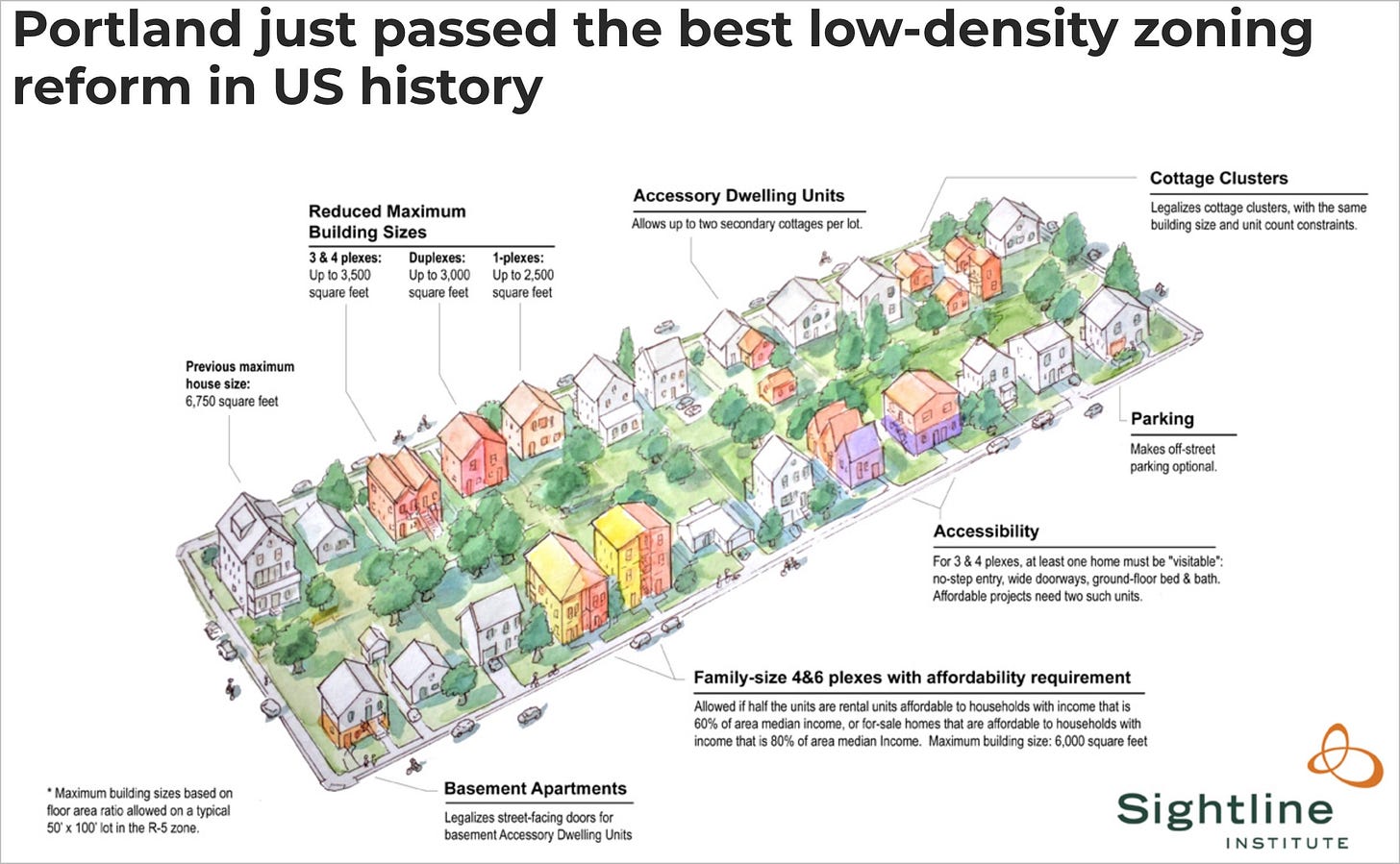

Damn, eh? What crappy legislation.